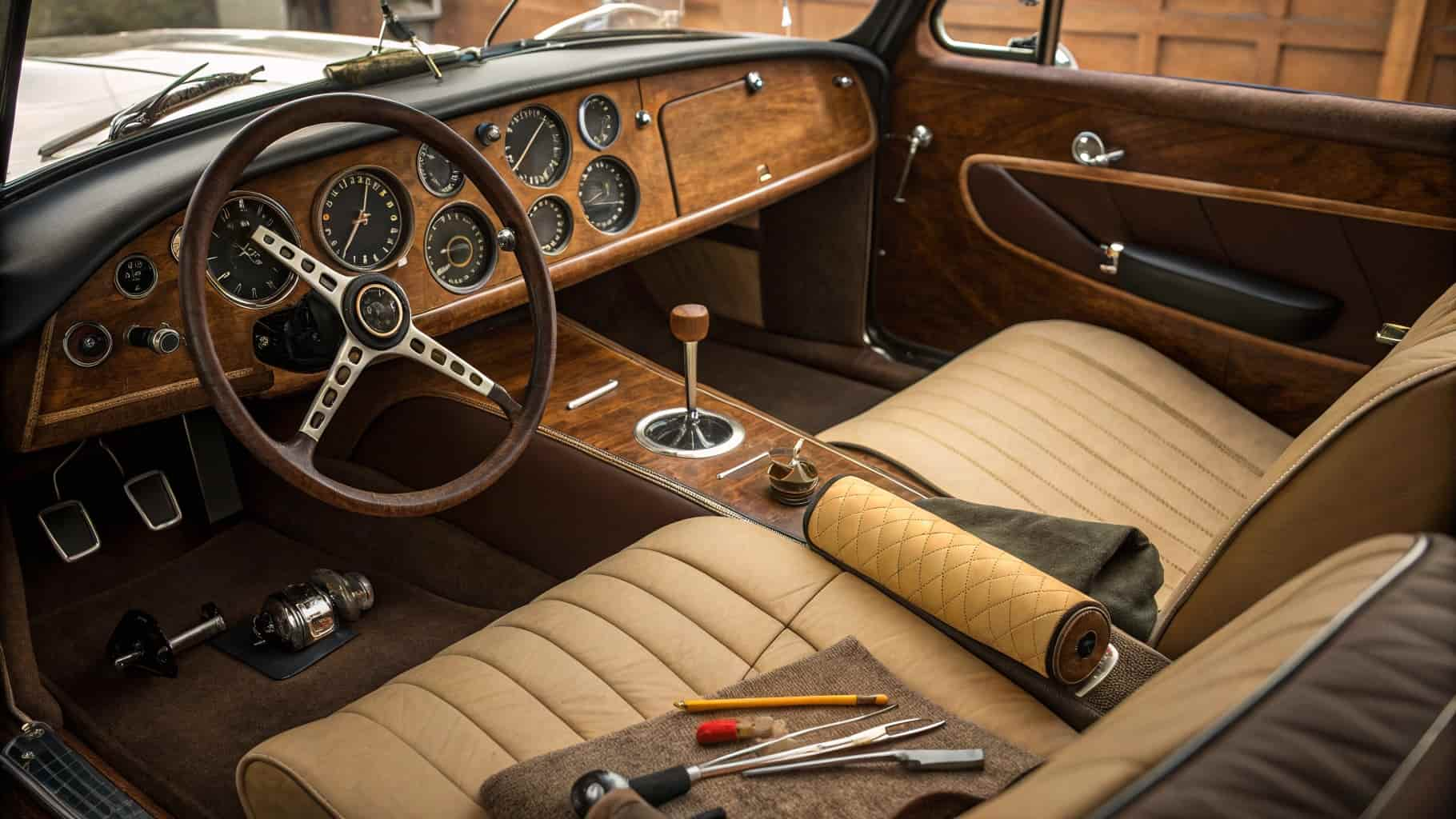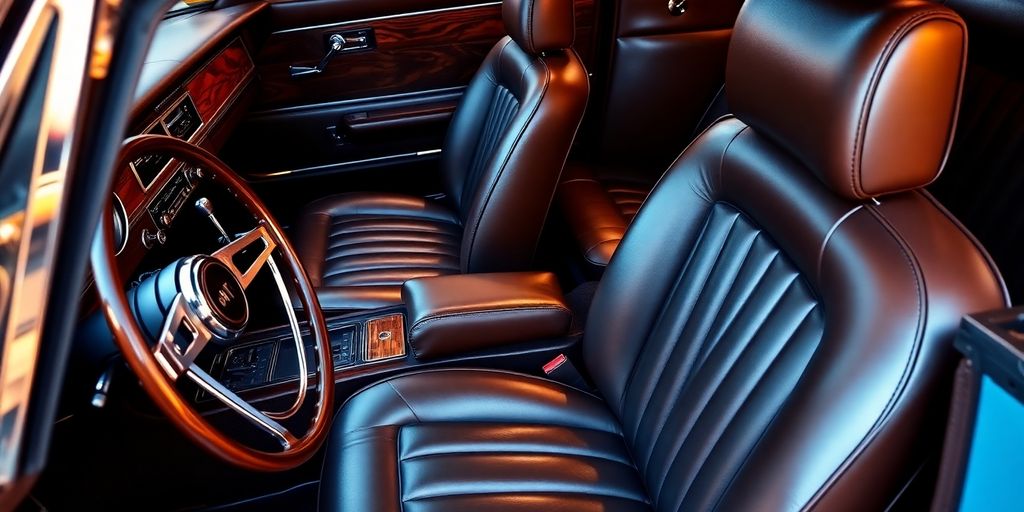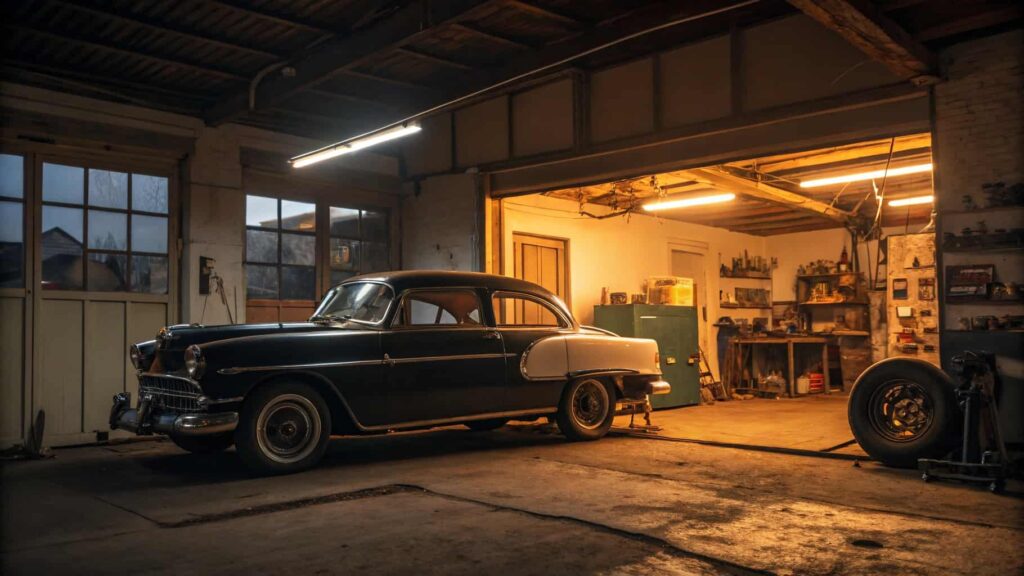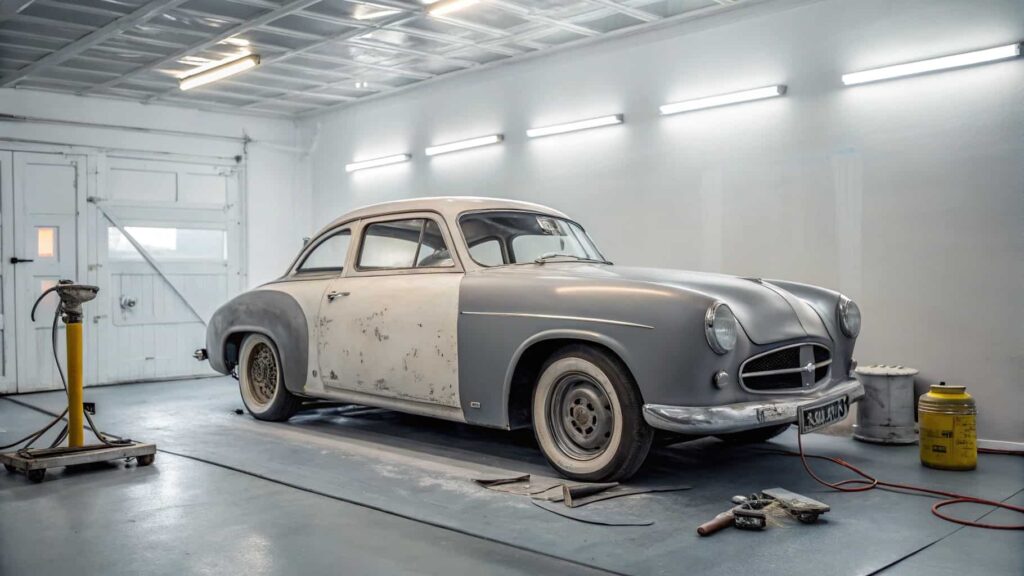Now Reading: Tips for Restoring Classic Car Interiors
-
01
Tips for Restoring Classic Car Interiors
Tips for Restoring Classic Car Interiors

Restoring classic car interiors is a rewarding journey that combines passion, patience, and attention to detail. Whether you’re bringing back a vintage beauty or preserving an heirloom, the interior plays a vital role in maintaining the car’s authenticity and value. From the seats to the dashboard, every element tells a story of the past, making interior restoration more than just a cosmetic upgrade—it’s a tribute to automotive history.
Successful restoration starts with understanding the unique challenges and planning carefully to match original materials and craftsmanship. With the right approach, tools, and knowledge, you can transform worn-out upholstery, cracked dashboards, and faded carpets into a stunning, authentic interior that captures the spirit of the era. These tips will guide you through the essential steps and considerations for bringing your classic car’s interior back to life.
Understanding the Basics of Classic Car Interior Restoration
Why Interior Restoration Matters
Restoring your classic car’s interior isn’t just about making it look good—it’s about capturing the spirit of a bygone era. A perfectly restored interior transforms your vehicle into a time capsule, showcasing craftsmanship through every stitch, dashboard detail, and carpet weave. Beyond beauty, a quality restoration protects your car’s resale value and personal enjoyment.
Common Challenges in Classic Car Interior Restoration
Classic car interiors pose unique challenges, such as:
- Matching Original Materials: Fabrics and leathers often fade or become discontinued, making authentic replacements tricky.
- Wear and Tear: From cracked dashboards to torn upholstery and worn carpets, aging takes its toll.
- Outdated Electrical Systems: Old wiring can be difficult to diagnose and repair, complicating dashboard and instrument restoration.
Key Components to Focus On
When planning your restoration, prioritize these areas:
- Seats and Upholstery: These are often the most worn and visible parts.
- Dashboard and Instrument Panel: Must be both functional and visually authentic.
- Carpets and Floor Mats: Essential for comfort and style, requiring precise fitting and durability.
A solid understanding of these elements will set you up for a smooth and successful restoration.
Planning Your Classic Car Interior Restoration Project
Setting Realistic Goals and Budget
Start with a clear vision and realistic goals. List every area needing work—seats, dashboard, carpets, door panels—and rank them by importance and cost. Research material prices and labor costs, and always add a contingency fund for surprises.
Creating a Step-by-Step Plan
Break your project into manageable tasks, such as:
- Assess the current interior condition.
- Identify parts to repair or replace.
- Source authentic materials.
- Address critical repairs first.
- Finish with cosmetic improvements.
A well-structured plan keeps the project organized and motivates progress.
DIY vs. Professional Help: What’s Best?
Consider your skills and time. DIY can save money and be highly satisfying but may require specialized tools and expertise for complex jobs like reupholstering or dashboard electronics. Professionals ensure quality finishes but come at a cost. Balance your budget, skill level, and timeline to decide.
Sourcing Authentic Materials for Classic Car Interiors

Finding Original Upholstery and Fabrics
Authenticity is key. To find original materials:
- Consult your car’s manual or marque experts.
- Explore specialty vintage upholstery suppliers.
- Search online marketplaces like eBay.
- Attend car shows and swap meets for rare finds.
Choosing the Right Carpets and Mats
Carpets contribute significantly to the interior’s look and feel:
- Identify your car’s original carpet style.
- Consider pre-cut carpet kits for easier installation.
- Opt for durable, high-quality materials to stand the test of time.
Locating Rare Parts and Accessories
Rare interior parts can be elusive:
- Join classic car clubs for networking.
- Connect with restoration professionals.
- Use online forums and classified ads focused on vintage cars.
Patience in sourcing authentic parts pays off with a genuine restoration.
Essential Tools for Restoring Classic Car Interiors

Basic Tools You’ll Need
- Screwdrivers (flathead & Phillips)
- Wrenches in various sizes
- Pliers and wire cutters
- Razor knives and shears
Specialized Tools for Upholstery and Finishing
- Heat gun for shaping materials and removing adhesives
- Hog ring pliers for securing upholstery
- Air compressor for cleaning and powering pneumatic tools
Safety Gear
Always prioritize safety with:
- Safety glasses
- Dust masks
- Gloves
Quality tools and safety equipment streamline your restoration and protect you.
Step-by-Step Guide to Restoring Classic Car Seats
Removing and Inspecting Old Seats
Carefully unbolt and remove seats. Inspect frames for rust or damage and check springs and padding.
Repairing or Replacing Seat Frames
Repair minor rust spots or weak areas with welding. Replace frames only if damaged beyond repair.
Choosing and Installing New Upholstery
Select durable, era-appropriate upholstery like leather or vinyl. Attach tightly with staples or upholstery tacks for a neat finish.
Revamping the Dashboard and Instrument Panel
Assessing Dashboard Condition
Inspect for cracks, fading, or electrical issues. Clean dust gently, and evaluate whether repairs or replacement are needed.
Repairing Cracks and Fading
Use dashboard repair kits and restorers to fill cracks and restore color.
Restoring Gauges and Controls
Clean gauges and controls carefully, replace bulbs or malfunctioning instruments, and lubricate switches.
Replacing and Refinishing Classic Car Carpets
Removing Old Carpets and Padding
Remove seats and peel back old carpets. Inspect floor pan for rust or damage and repair as needed.
Installing Soundproofing
Add soundproofing mats like Dynamat for noise reduction and insulation.
Cutting and Fitting New Carpets
Trim new carpet to fit perfectly around pedals and contours. Secure firmly and reinstall seats.
Restoring Door Panels and Headliners
Evaluating and Repairing Door Panels
Inspect for wear or cracks; clean or replace panels as needed. Handle brittle plastic connectors with care.
Replacing Headliners
Remove sagging or stained headliners and install new ones with high-quality adhesive for a wrinkle-free finish.
Ensuring Proper Fit and Finish
Measure carefully and adjust for a professional-looking interior that preserves structural integrity.
Maintaining Your Restored Classic Car Interior
Regular Cleaning and Care
Dust surfaces, vacuum carpets and seats regularly. Condition leather and clean fabric upholstery as needed.
Protecting Against Sun and Wear
Use sunshades, UV-blocking window tints, and breathable car covers to shield interiors from fading and damage.
Scheduling Professional Detailing
Professional detailing once or twice a year helps maintain shine and provides protective treatments.
Cost-Effective Tips for Classic Car Interior Restoration
Prioritize Repairs
Focus on urgent repairs first to maximize impact and manage costs.
Find Affordable Parts and Services
Use salvage yards, online forums, and vocational school services for budget-friendly options.
DIY Techniques to Save Money
Tackle simple repairs and cleaning yourself using online tutorials and invest in essential tools gradually.
Finding Expert Help and Resources
When to Call Professionals
Seek expert assistance for complex repairs like electrical wiring or specialized upholstery.
Locating Restoration Experts
Ask local car clubs, attend car shows, and research online for trusted restoration professionals.
Utilizing Community Resources
Join online forums and consider restoration courses at local colleges to enhance your skills.
Wrapping Up Your Classic Car Interior Restoration
Restoring a classic car interior requires patience, planning, and attention to detail—but the results are truly rewarding. Whether you DIY or hire professionals, every step brings your vintage vehicle back to life, preserving history for generations to come. Enjoy the process and take pride in your beautiful, timeless classic.
Frequently Asked Questions
Clean and condition all surfaces, repair or replace worn upholstery, restore the dashboard, and add fresh carpets or mats to refresh the look.
The hardest part is often sourcing authentic parts and matching original materials to maintain the car’s historical accuracy.
Use gentle, non-abrasive cleaners for upholstery and dashboards, vacuum carpets thoroughly, and condition leather regularly to preserve materials.
Replace worn seat foam, cracked dashboard parts, damaged wiring, and old carpet padding to ensure safety and comfort.
Models like the Ford Mustang and Chevrolet Camaro are often considered easier due to widely available parts and strong restoration communities.
The interior trim and wiring often get overlooked but are crucial for both aesthetics and functionality.
Cleaning, conditioning, repairing upholstery, replacing damaged components, and protecting surfaces from UV damage help restore interiors.
Start with a thorough vacuum, clean all surfaces carefully, condition leather and vinyl, polish metal trims, and deodorize the cabin.




















